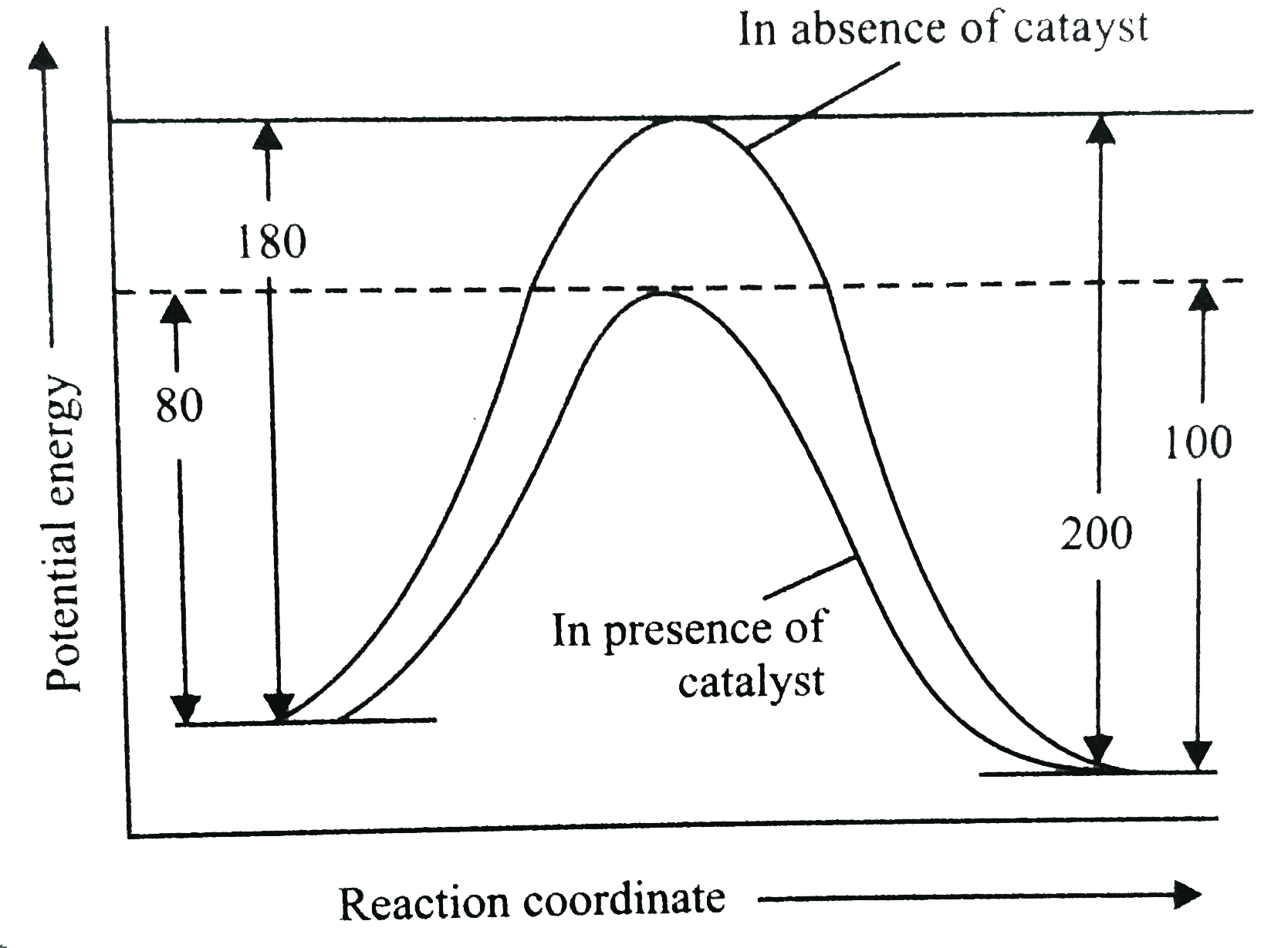The energies of activation for forward and reverse reaction for A2+B2⇔2AB are 180kJmol−1 and 200kJmol−1 respectively. The presence of catalyst lowers the activation energy of both (forward and reverse) reactions by 100kJmol−1. The enthalpy change of the reaction (A2+B2→2AB) in the presence of catalyst will be (in kJmol−1):
300
120
280
−20
The correct Answer is:D

So, ΔHreaction=Ef−Eb
=80−100=−20kJmol−1
Topper's Solved these Questions
- CHEMICAL KINETICSBook:A2ZChapter:CHEMICAL KINETICSExercise:Parallel Reaction, Consecutive Reaction, Special Cases Of First-Order Reactions
Explore 25 Videos
- CHEMICAL KINETICSBook:A2ZChapter:CHEMICAL KINETICSExercise:Section B - Assertion Reasoning
Explore 21 Videos
- CHEMICAL KINETICSBook:A2ZChapter:CHEMICAL KINETICSExercise:Initial Rate Method And Ostwaid Method
Explore 18 Videos
- BIOMOLECULESBook:A2ZChapter:BIOMOLECULESExercise:Section D - Chapter End Test
Explore 30 Videos
- COORDINATION COMPOUNDSBook:A2ZChapter:COORDINATION COMPOUNDSExercise:Section D - Chapter End Test
Explore 30 Videos
Similar Questions
The energies of activation forward and revers reaction for A2+B2→2AB are 180 kJ mol−1 and 200 kJ mol−1 respectively. The pressure of a catalyst lowers the activation energy of both (forwar and reverse) reactions by 100kJmol−1. The magnitude of enthalpy change of the reaction (A2+B2→2AB) in the presence of catalyst will be (in Kj mol−1):
View SolutionA catalyst lowers the activation energy of the forward reaction by 10 kJ mol−1. What effect does it have on the activation energy of the backward reaction?
View Solution
Knowledge Check
The energies of activation for forward and reverse reaction for A2+B2⇔2AB are 180kJmol−1 and 200kJmol−1 respectively. The presence of catalyst lowers the activation energy of both (forward and reverse) reactions by 100kJmol−1. The enthalpy change of the reaction (A2+B2→2AB) in the presence of catalyst will be (in kJmol−1):
A300B120C280D-20The energies of activation for forward and reverse reactions for A2+B2⇔2AB are 180 kJ mol−1 and 200 kJ mol−1 respectively. The presence of a catalyst lowers the activation energy of both (forward and reverse) reactions by 100 kJ mol−1. The enthalpy change of the reaction (A2+B2→2AB) in the presence of a catalyst will be (in kJ mol−1)
A−20B300C120D280The energies of activation for forward and reverse reactions for A2+B2↔2AB are 180kJmol−1and200kJmol−1 respectively. The presence of catalyst lowers the activation energy of both (forward and reverse) reactions by 100kJmol−1. The enthalpy change of the reaction (A2+B2→2AB) in the presence of a catalyst will be (in kJmol−1)
A20B300C120D280
If the activation enery for the forward reaction is 150kJ mol−1 and that of the reverse reaction is 260kJ mol−1. What is the ethalpy change for the reaction ?
View SolutionIf the activation enery for the forward reaction is 150kJ mol−1 and that of the reverse reaction is 260kJ mol−1. What is the ethalpy change for the reaction ?
View SolutionIf the activation enery for the forward reaction is 150kJ mol−1 and that of the reverse reaction is 260kJ mol−1. What is the ethalpy change for the reaction ?
View SolutionIn an exothermic reaction A→B, the activation energy of the forward reaction is 200kJmol−1. The enthalpy of the reaction is 280kJmol−1. The activation energy of the reverse reaction B→A is
View SolutionThe activation energy of exothermic reaction A→B is 80 kJ mol−1 . The heat of reaction is 200kJmol−1. The activation energy for the reactionB→a ( in kJ/mol) will be :
View Solution

